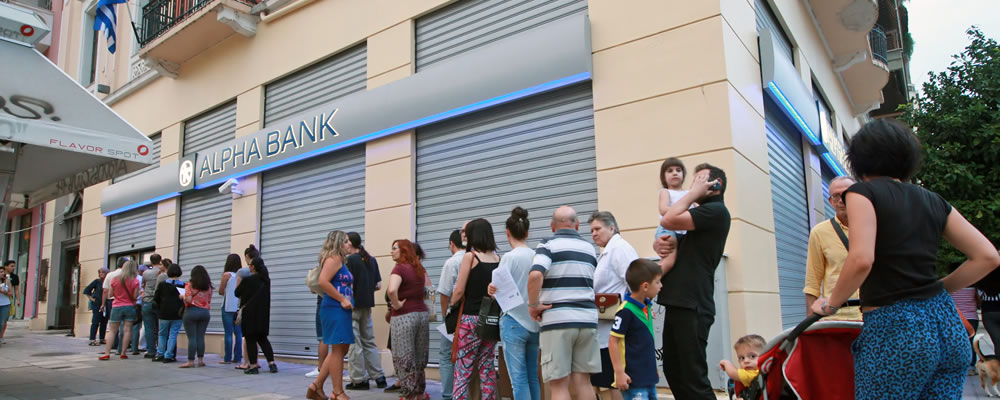The Euro has fluctuated against the Australian Dollar this morning, lingering in the mid-low 1.38 range as fears that Greece will be forced to crash out of the Eurozone persist.
The possibility of a ‘Grexit’ has once again been taking centre stage this morning as Eurozone finance ministers are set to meet in Brussels to discuss Greece’s crippling debt.
Greece’s government is currently at an impasse with its creditors over the implementation of further austerity measures, with Greek Prime Minister Alexis Tsipras refusing to impose any government cuts that would negatively impact the people of Greece.
Investors are pessimistic that this latest meeting will lead to any kind of breakthrough as the Greek government remains unwilling to budge, contributing to the weakness in EUR AUD.
Markets fear that Greece will default on a €7.4bn debt repayment to the European Central Bank (ECB) in July, exacerbating the nation’s debt crisis and possibly requiring another Greek bailout.
The uncertainty of the situation has also prompted the mass withdrawal of money from Greek banks, with an estimated €2.2bn having been removed since the start of 2017 as the population of Greece fear the possibility that the nation will be unceremoniously thrown out of the EU.
However, recent comments from the European Stability Mechanism (ESM), which controls the Eurozone bailout fund, may help to mitigate some of the damage to the Euro as it claimed that Greece requires far less money than expected.
Klaus Regling Chief Executive Officer of the ESM, in speaking with German newspaper Bild said that the fund will ‘probably have paid out far less than the agreed maximum amount of 86 billion euros’ than planned for by August 2018 as Greece’s budget was performing better than expected.
EUR was also prevented from sliding further thanks to a better than expected uptick in German Producer Prices as they jumped from 1.0% to 2.4% in January, outpacing expectations that they would rise to 2.0%.
Meanwhile the Australian Dollar has struggled to stabilise at the start of the week despite iron ore prices consolidating their gains after rocketing to over $90 a tonne last week.
After reaching $92.23 a tonne, its highest levels since August 2014, prices for benchmark 62% fines currently sit around $90.37 – bringing an end to three consecutive days of losses, according to Metal Bulletin.
However, the ‘Aussie’ lost its footing by the end of the Asian session as a warning from John Adams, a former government economic advisor, unsettled investors.
Adams points to a number of signs such as record household debt and the housing bubble as undermining the Australian economy’s long term prospects as he says the country is headed towards an ‘economic armageddon’.
In an interview with news.com.au Mr Adams said;
‘The data clearly demonstrates that there are significant structural economic imbalances in the Australian economy. Millions of Australians are not only doing it tough through significant cost of living and debt serving pressures, but are at significant risk of being financially wiped out if an unanticipated adverse international economic shock were to hit Australia.’
The warning also called for the Reserve Bank of Australia (RBA) to begin raising interest rates again in order to pre-empt any major crisis.
The likelihood of the RBA taking such drastic action may be outlined with the release of the minutes from the central bank’s latest policy meeting on Tuesday, with the Australian Dollar likely to strengthen if the Bank outlook is hawkish in nature.
Meanwhile the Euro may be weakened by the latest Eurozone Consumer Confidence data as analysts predict that the current political uncertainty on the continent will cause sentiment to fall from -4.7 to -4.9 in February.
Current Interbank Exchange Rates
At the time of writing the EUR AUD exchange rate was trending around 1.38 and the AUD EUR exchange rate was trending around 0.72.
